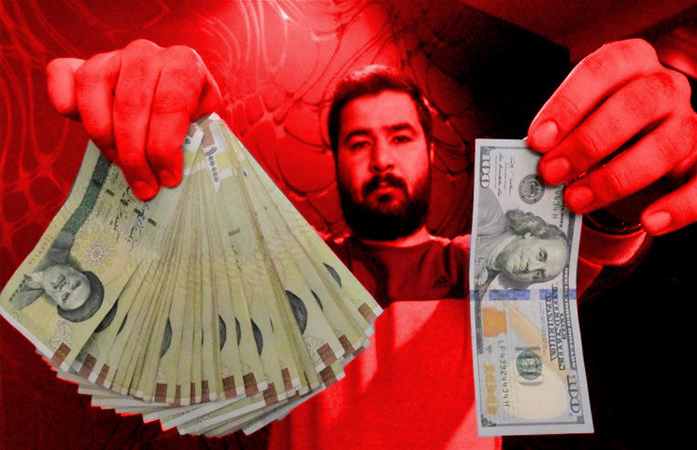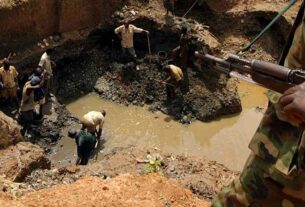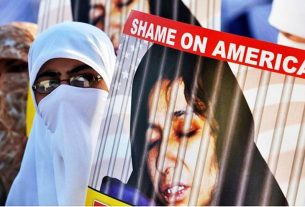Having vowed to protect the ‘downtrodden’, the Islamic Republic is unable to undertake any major structural reforms.
Six months after the US sanctions came into effect, Iran’s economy appears to be struggling. Efforts by the international community to salvage the nuclear deal and provide an economic lifeline to Iran to dampen the fallout of the sanctions have not borne fruit so far and recent devastating floods in the oil-producing southwest of the country have only exacerbated the situation.
Even before the recent decision by the United States government not to extend waivers provided to eight buyers of Iranian oil, the Islamic Republic was able to sell no more than 1.3 million barrels per day (bpd). Now its oil exports are expected to drop even further, which means the deficit gap in the state budget this year will be larger than expected.
At the same time, the measures the Iranian government is taking in order to minimise the effect of the sanctions are unsustainable and unlikely to work, as they do not address any of the major structural problems the economy suffers from.
The Islamic Republic continues to resort to inefficient stop-gap economic policies because giving up on its promise of social provision, which constitutes a major part of its post-1979 social contract, could endanger its survival.
A raging economic crisis
When preparing the budget bill for this year, President Hassan Rouhani’s administration planned for oil exports to be around 1.5 million bpd, sold at a price of $54 a barrel or above. Thus the budget submitted to parliament earlier this year was set at 4.8 quadrillion rial (around $47bn at the current unofficial exchange rate) and up to 33 percent of it was supposed to come from oil revenue.
Earlier this year, before the Trump administration took the decision to stop US sanction waivers was announced, the oil sector was estimated to shrink between 26 and 31 percent. With this announcement, the slump in the oil industry is expected to be even bigger.
Even if the US fails to bring Iranian oil exports to zero, sales will definitely collapse way below the government-projected 1.5 million bpd (and even below the 1.1 million bpd estimated by market experts), leaving Iran with a large financial gap.
This comes amid an already raging economic crisis which the Iranian authorities have struggled to contain. As inflation hit 40 percent earlier this year, consumer prices went up by 40 to 60 percent, putting additional strain on the already impoverished lower-class Iranian households.
Key industries – like the petrochemical, car and construction industries, which are highly dependent on imported equipment, spare parts and raw materials – are also suffering from the depreciation of the Iranian currency, which last year lost more than 100 percent of its value, significantly decreasing the purchasing power of Iranian companies on the international market.
Overall, Iran’s economy in 2019 is expected to go even deeper into recession, with estimated negative growth of 5.5 percent or higher.
New problems, old fixes
In the face of a looming economic disaster, the Iranian government is paradoxically adopting policies that do not address any of the major structural problems burdening the national economy.
The budget voted in March envisions an increase in current expenditures by 16 percent to maintain existing social programmes, boost state employee salaries to compensate for the negative effect of inflation and provide cheaper foreign currency to companies importing essential goods and raw materials. Some $14bn has been allocated to maintain the low prices on basic food products and medicines.
The government is also seeking to regulate domestic prices by directly demanding from some producers to accept lower profit margins. It also offers low prices for the produce of local farmers so it can provide foodstuffs at minimal cost to the general public.
It continues to subsidise fuel and electricity and is even considering the reintroduction of the coupon system it used to run during the 1980s Iran-Iraq war to allocate cheap basic goods to Iranian household.
But these policies are neither sustainable nor efficient. Iran’s financial capacity has already been overstretched by the substantial social spending the government has undertaken in recent years. Currently, annual subsidies and social programmes cost the Iranian government up to half of the total budget.
The fact that oil exports will slump below what was planned for in the state budget means that the government will simply not have the money to implement some of these policies.
In fact, it is already struggling to fulfil some of the plans it has made to provide additional assistance to struggling sectors. As of mid-March, the Iranian authorities had already failed to provide 20 percent of the loans they promised to car makers and car spare part producers.
It also had to cancel a programme supplying bread producers with cheap wheat flour in order to reallocate the funds to cover the guaranteed purchases of grain from local farmers.
Tehran’s attempts to control consumer prices are also not working. Providing importers with cheap foreign currency is unlikely to produce the desired results. The Majlis Research Center, a think-tank affiliated with the Iranian parliament, recently found that in 2018 a similar measure had little effect on consumer prices and inflation, as the recipients of cheap foreign exchange currency tended to either sell it on the black market or sell the goods they imported at inflated prices.
Price controls on local producers could also backfire. They could further discourage local businesses from expanding production given the rising cost of raw materials and shrinking profit margins and encourage the excessive export of goods out of the country, adding to the market deficit. Temporary export bans on selected items such as poultry, sugar, certain types of fruit, and more have only stimulated the smuggling business.
Meanwhile, the government is pulling funds out of long-term development and infrastructural projects. In this year’s budget, the allocated funds to the National Development Fund which is supposed to help decrease the dependence of the Iranian economy on oil are inadequate. The fund has also lost part of its reserves which were reallocated to cover military and civilian expenditures.
Iran’s ideological woes
The main reason behind the Iranian leadership’s failure to improve the country’s economic situation is its tendency to focus on dealing with the consequences of economic problems (such as high inflation rates, rising prices, illegal economic activities etc) rather than their sources. In order to find sustainable solutions to Iran’s economic challenges, Tehran will need to make some structural reforms including cutting down or, at least, optimising the unjustifiably large social programmes and indirect subsidies.
However, the Iranian leadership is reluctant to take such steps because it goes against its self-declared social protection agenda.
In 1979, Ayatollah Khomeini and his followers declared the protection of the downtrodden, or mostazafin, as one of the main tasks of the newly created Islamic Republic. By doing so, they not only secured the support of the lower classes and guaranteed the durability of their regime, but also unwillingly chained their success to problematic and hard-to-sustain policies such as consumer subsidies.
As a result, the Iranian authorities created a mechanism to control the import, production and distribution of basic consumer goods. However, this system, which helped guarantee the survival of the regime for four decades, came at a heavy cost – it swallowed valuable financial resources that could have been used to develop the economy.
Today, the Iranian leadership knows that it cannot resolve the country’s economic problems without stripping down this social protection system. However, it also knows that attempting to change this system would lead to an immediate rise in consumer prices, which could turn the lower classes against the regime.
Under these circumstances, Iran’s economic prospects for 2019 remain gloomy. In order to cope with the country’s deep-rooted economic problems, Tehran has to conduct substantial reforms – something the current leadership is reluctant to do. Consequently, the Iranian government is stuck with the unproductive policy of trying to deal with the consequences of problems rather than their origin for yet another year.

The statements, views and opinions expressed in this column are solely those of the author and do not necessarily represent those of Media Revive Network.
Think your friends would be interested? Share this story!





